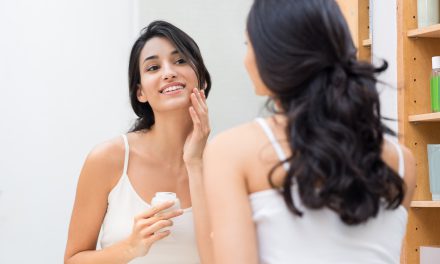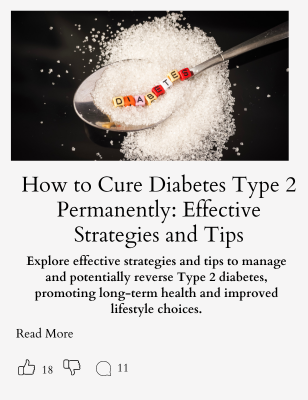Aging skin needs special care to stay healthy and vibrant. The key to maintaining youthful skin is to keep it clean, hydrated, and protected from damage caused by the sun and other factors. Using gentle cleansers, regular moisturizers, and daily sun protection helps slow down the signs of aging and keeps skin looking its best.
Lifestyle choices also play a big role in skin health. Eating well, avoiding smoking and excessive alcohol, and managing stress contribute to a stronger skin barrier and improved appearance. Some may also benefit from advanced skincare products or treatments that support collagen levels and skin elasticity.
By understanding how skin changes over time and adopting simple daily habits, anyone can maintain long-term skin vitality and feel confident in their skin as they age.
Key Takeaways
- Healthy skin needs regular care with gentle cleansing, moisturizing, and sun protection.
- Good diet and healthy lifestyle habits support skin strength and appearance.
- Consistent habits help maintain skin’s vitality well into later years.
Understanding Skin Aging
Skin changes with age due to multiple factors. Some changes are natural, while others come from genetics and the environment. Recognizing signs of healthy skin and aging skin helps guide proper care.
How Skin Changes Over Time
As people age, the skin becomes thinner and loses fat, making it less smooth and plump. Collagen and elastin, which keep skin firm and elastic, decrease. This causes wrinkles and sagging.
Oil production also slows down, leading to drier skin. The skin’s ability to repair itself weakens, so cuts and bruises may heal more slowly. Sun exposure speeds up these changes by damaging the skin’s structure.
Staying hydrated and using sunscreen helps protect the skin’s barrier and delays some aging effects.
The Role of Genetics and Environment
Genetics determines baseline skin traits like thickness, oiliness, and sensitivity. Some people inherit skin that ages faster or slower. For instance, fair skin tends to show age signs sooner due to less natural protection from the sun.
Environmental factors like sun exposure, pollution, smoking, and diet heavily influence skin aging. Excessive sun exposure is the leading cause of premature aging by breaking down collagen. Smoking reduces blood flow and damages skin cells.
Limiting time in strong sunlight and avoiding smoking are key steps to slow environment-driven skin aging. Proper skincare can also help reduce damage and support skin health.
Signs of Healthy Versus Aging Skin
Healthy skin is smooth, firm, and well-hydrated. It has an even tone, minimal wrinkles, and good elasticity. It recovers quickly from minor injuries.
Aging skin shows wrinkles, fine lines, and sagging. It can appear dull and dry due to lower oil and moisture levels. Uneven pigmentation and age spots may develop. Sensitivity and slower healing are more common.
Maintaining a routine with hydration, sun protection, and balanced nutrition supports healthy skin and slows visible aging. For more details on skin health and aging, visit the National Institute on Aging’s skin care guide.
There’s a product that may help maintain healthy, vibrant skin as you age by supporting timeless radiance with essential nutrients and skincare benefits. It’s designed to nourish and rejuvenate, helping you look and feel your best. Let me know if you’d like more details! Learn more on our YouTube Channel Here: Valleant Health, or see us on Facebook Here: https://www.facebook.com/valleant
Daily Skincare Habits for Aging Skin
Maintaining healthy aging skin depends on gentle cleansing, proper moisturizing, and following a consistent routine. Each step supports the skin’s natural ability to stay hydrated and protected from damage.
Optimal Cleansing Routines
Using a mild cleanser once daily helps remove dirt and oil without stripping natural moisture. Harsh soaps can dry out aging skin and make wrinkles look worse.
It is best to choose a gentle, hydrating cleanser designed for sensitive or mature skin. Washing with lukewarm water, not hot, protects the skin’s natural oils.
Avoid over-cleansing, which can cause irritation or dryness. Some may benefit from cleansing only at night and rinsing with water in the morning to keep skin balanced.
Effective Moisturization Techniques
Moisturizing is vital as skin loses its ability to retain water over time. Look for creams or lotions containing ingredients like hyaluronic acid, glycerin, and ceramides. These help attract and hold moisture.
Apply moisturizer to slightly damp skin to lock in hydration. Use gentle upward strokes to avoid tugging. Don’t forget often-missed areas like the neck and hands, where signs of aging also appear.
Using an eye cream can reduce dryness and fine lines in the delicate undereye area. For daytime, choose a moisturizer with SPF for added sun protection.
Importance of Consistency in Skincare
Daily skincare habits work best when done regularly. Skin needs time to adjust and benefit from products, especially those targeting aging concerns.
Skipping steps or using products irregularly can reduce effectiveness and slow results. Creating a simple routine that fits a person’s lifestyle increases the chance of long-term care.
Consistency includes always applying sunscreen, as sun exposure speeds aging and causes damage. Even on cloudy days, broad-spectrum sunscreen with SPF 30 or higher helps protect skin’s health and appearance.
For more advice, see Skin care for aging skin.
Sun Protection and Skin Health
Protecting skin from the sun is essential to keep it healthy and reduce signs of aging. Using the right sunscreen daily, wearing protective clothing, and choosing effective sun barriers can slow damage from UV rays.
Benefits of Daily Sunscreen Use
Daily sunscreen use helps block harmful UV rays that cause wrinkles, age spots, and increase skin cancer risk. Sunscreen with broad-spectrum protection guards against both UVA and UVB rays, which contribute to skin aging and damage.
Applying a palm-sized amount evenly to all exposed skin every day is important, even on cloudy days. Reapplying every two hours and after swimming keeps the protection effective. Regular use helps maintain the skin’s youthful look by reducing sun-induced wear and tear.
Sunscreens also help prevent the buildup of skin damage that cannot be fully repaired over time. For more on daily application and benefits, see this sun protection routine.
Choosing the Right SPF
SPF stands for Sun Protection Factor, showing how well a sunscreen protects from UVB rays. Dermatologists recommend using sunscreen with at least SPF 30. Higher numbers like SPF 50 provide more protection, but need proper amounts to be effective.
Broad-spectrum sunscreens are essential because they protect against UVA rays that cause long-term skin aging. Mineral sunscreens with ingredients like zinc oxide or titanium dioxide are less likely to irritate and offer good protection.
Choosing a sunscreen that suits your skin type, such as a non-comedogenic formula for oily or sensitive skin, helps maintain the skin’s balance while preventing sun damage. Detailed choices for SPF and types are explained in this guide on sun protection essentials.
Protective Clothing and Accessories
In addition to sunscreen, wearing protective clothing reduces the skin’s direct exposure to UV rays. Long sleeves, wide-brimmed hats, and UV-blocking sunglasses shield sensitive areas like the face, neck, and eyes.
Fabrics with a UPF (Ultraviolet Protection Factor) rating offer measured sun protection. Darker and tightly woven fabrics usually block more UV rays than lighter or loose-weave clothing.
Using these physical barriers alongside sunscreen creates a strong defense against sun damage, especially during peak hours of 10 a.m. to 4 p.m. Combining methods is key for maintaining skin’s health and preventing premature aging. Learn more about sun protection strategies in this article on how sun exposure accelerates skin aging.
There’s a product that may help maintain healthy, vibrant skin as you age by supporting timeless radiance with essential nutrients and skincare benefits. It’s designed to nourish and rejuvenate, helping you look and feel your best. Let me know if you’d like more details! Learn more on our YouTube Channel Here: Valleant Health, or see us on Facebook Here: https://www.facebook.com/valleant
Nutrition for Vibrant Skin
Good skin relies on key nutrients, enough water, and specific foods that support its health and glow. Proper nutrition helps protect skin from damage and keeps it looking firm and fresh.
Essential Vitamins and Minerals
Vitamins A, C, and E are crucial for skin health. Vitamin A helps repair skin cells and reduce wrinkles. Vitamin C boosts collagen, making skin firmer and aiding healing. Vitamin E protects skin from sun damage.
Minerals like zinc and selenium support skin repair and reduce inflammation. Zinc helps with wound healing and controlling oil production. Selenium acts as an antioxidant, guarding skin cells against damage from free radicals.
Including a variety of fruits, vegetables, nuts, and seeds ensures enough intake of these vitamins and minerals. Eating soy products, like edamame, can provide isoflavones that also support skin, especially for aging skin.
Hydration and Its Impact on Skin
Staying hydrated is important for maintaining skin elasticity and preventing dryness. Water helps flush out toxins and supports cell renewal. When the body is dehydrated, skin can look dull and feel tight.
Drinking at least 8 cups of water daily is a common goal, but needs vary by individual. Foods high in water content, like cucumber, watermelon, and oranges, also contribute to hydration. Avoiding excessive caffeine and alcohol is wise since they can dehydrate the skin.
Proper hydration helps the skin stay smooth and can reduce the appearance of fine lines.
Foods to Enhance Skin Radiance
Certain foods support glowing skin by providing healthy fats, antioxidants, and protein. Fatty fish like salmon are rich in omega-3 fatty acids, which reduce inflammation and keep skin moisturized.
Berries, tomatoes, and leafy greens supply antioxidants that protect against sun damage and aging. Whole grains and legumes support skin strength by providing protein and essential nutrients.
Nuts and seeds add healthy fats and vitamin E, which enhances the skin’s natural barrier. Eating a balanced mix of these foods regularly can improve skin texture and brightness over time. More information on these foods is available at the Cleveland Clinic’s guide on the best foods for healthy skin.
There’s a product that may help maintain healthy, vibrant skin as you age by supporting timeless radiance with essential nutrients and skincare benefits. It’s designed to nourish and rejuvenate, helping you look and feel your best. Let me know if you’d like more details! Learn more on our YouTube Channel Here: Valleant Health, or see us on Facebook Here: https://www.facebook.com/valleant
Advanced Skincare and Treatments
Maintaining healthy, vibrant skin with age involves using targeted ingredients and understanding treatments. Proper use of exfoliants and knowing when to seek professional help also play important roles in skin care, as it changes over time.
Retinoids and Peptides Explained
Retinoids are vitamin A derivatives that help reduce wrinkles and improve skin texture. They speed up cell turnover, revealing fresher skin underneath. Retinoids also promote collagen production, which supports skin firmness. However, they can irritate, so starting with a low concentration and using them at night is advised.
Peptides are short chains of amino acids that signal the skin to repair and build collagen. Unlike retinoids, peptides are gentler and can be used alongside other products. They help with skin elasticity and hydration. Using creams or serums containing peptides regularly can improve skin smoothness and reduce signs of aging.
Professional Procedures for Aging Skin
Advanced treatments like chemical peels, microdermabrasion, and laser therapy remove damaged skin and stimulate healing to reduce age spots, fine lines, and uneven tone. These procedures can improve skin clarity and texture but require professional guidance. Some treatments need multiple sessions for the best effect.
Injectables such as Botox and fillers reduce wrinkles by relaxing muscles and adding volume where skin thins. Professionals tailor these treatments to individual skin needs. It’s important to get these procedures done by licensed experts to ensure safety and natural results.
Safe Use of Exfoliants
Exfoliation removes dead skin cells to brighten skin and boost renewal. For aging skin, gentle exfoliation is key to avoid irritation or dryness. Physical scrubs with rough particles may damage delicate skin and should be used cautiously.
Chemical exfoliants like alpha hydroxy acids (AHAs) and beta hydroxy acids (BHAs) offer controlled, effective exfoliation. AHAs help with surface cell turnover, while BHAs penetrate pores to clear buildup. Using exfoliants once or twice a week is recommended, combined with moisturizing and sun protection to support skin health. For more guidance on gentle exfoliation and its benefits, consult trusted skin care resources.
Lifestyle Choices That Affect Skin Aging
Many everyday habits directly influence how skin ages. These include sleep quality, stress levels, and the use of alcohol and tobacco. Adjusting these can help keep skin healthier and reduce visible signs of aging.
Sleep and Skin Regeneration
Sleep is crucial for skin repair. During deep sleep, the body produces collagen, which keeps skin firm and smooth. Lack of sleep slows down cell regeneration, leading to dull and tired-looking skin.
Poor sleep can also increase inflammation, which worsens skin conditions like acne and psoriasis. Dark circles and puffiness are common signs of insufficient rest. Experts suggest aiming for 7-9 hours of quality sleep nightly to support the skin’s natural healing process.
Using a cool, dark, and quiet room can improve sleep quality. Avoiding screens before bedtime also helps the body prepare for rest. These steps contribute to better skin over time.
The Effects of Stress on Skin
Stress triggers the release of hormones like cortisol, which can break down collagen and cause skin to lose elasticity. High stress increases oil production, leading to breakouts and clogged pores. It can also worsen redness and irritation.
Chronic stress slows wound healing and can cause flare-ups of skin problems such as eczema or rosacea. Managing stress through exercise, meditation, or hobbies can protect skin and improve its appearance.
Simple breathing exercises and regular physical activity can lower stress levels. Consistent stress management supports clearer, more resilient skin.
Limiting Alcohol and Tobacco
Alcohol dehydrates skin, making it dry and prone to wrinkles. It also dilates blood vessels, which can cause redness and broken capillaries. Drinking in moderation, or avoiding alcohol, helps maintain skin moisture and tone.
Tobacco smoke contains toxins that reduce blood flow and damage collagen and elastin fibers. Smokers often develop early wrinkles, especially around the mouth and eyes, and have dull, uneven skin tone.
Quitting smoking and limiting alcohol intake slows skin aging and improves skin health. Both habits reduce the risk of skin damage and can help skin look more youthful.
There’s a product that may help maintain healthy, vibrant skin as you age by supporting timeless radiance with essential nutrients and skincare benefits. It’s designed to nourish and rejuvenate, helping you look and feel your best. Let me know if you’d like more details! Learn more on our YouTube Channel Here: Valleant Health, or see us on Facebook Here: https://www.facebook.com/valleant
Maintaining Long-Term Skin Vitality
Keeping skin healthy over time requires careful attention to changing needs and conditions. It involves adjusting care habits, watching for new signs, and knowing when to get expert help. These steps help protect the skin’s strength and brightness as it ages.
Adapting Routines Over Time
Skin changes with age, so routines must change too. As skin gets drier, using a rich moisturizer with ingredients like hyaluronic acid helps lock in moisture. Sunscreen application should remain consistent since sun damage accumulates over years.
Cleansers should be gentle to avoid drying out the skin further. Switching to products with antioxidants, such as vitamin C or E, can protect skin from damage caused by free radicals. Adjusting routines seasonally—for example, using heavier creams in winter—also supports skin health.
Regular review of products ensures they still match the skin’s needs. What worked five years ago may not be enough now.
Monitoring Skin Changes
Regular observation helps catch skin issues early. Watching for new spots, color changes, or texture is important. Noticing increased dryness, redness, or irritation can signal changes that need attention.
Using a simple checklist can help track changes:
| Skin Aspect | What to Watch For |
|---|---|
| Texture | Rough patches, flaking |
| Color | Redness, dark spots, uneven tone |
| Sensitivity | Itching, burning, irritation |
Taking photos months apart can also show subtle changes not easily seen day to day. This kind of monitoring helps identify when to update care or get professional advice.
Seeking Professional Guidance
Consulting a dermatologist or skincare expert is key when skin issues appear or worsen. They can provide tailored advice and treatments based on skin type and concerns. A professional can detect problems like skin cancer early or recommend treatments for pigmentation and wrinkles.
Medical-grade products or procedures, such as chemical peels or laser therapy,y might be suggested. Experts also check for underlying health conditions affecting skin, such as hormonal changes or allergies.
Regular skin exams, especially after age 40, support long-term skin vitality and prevent serious conditions.
Frequently Asked Questions
Maintaining healthy, vibrant skin with age involves specific daily habits, natural treatments, and ways to keep skin hydrated. It also means watching for early signs of skin aging and knowing safe options to improve skin appearance.
What daily skincare routine is recommended for aging skin?
He or she should use a gentle cleanser once a day to remove dirt without drying skin. Moisturizing daily is important because aging skin tends to get dry.
Using sunscreen every day protects skin from sun damage, which speeds aging. Avoiding harsh soaps and staying hydrated also helps.
Which natural remedies help rejuvenate mature skin?
Natural ingredients like aloe vera and honey can soothe and hydrate skin. Applying oils like avocado or coconut oil may help keep skin soft.
Eating a balanced diet rich in antioxidants from fruits and vegetables supports skin health from the inside.
What are effective strategies for preventing dry skin in older adults?
Applying moisturizer regularly, especially after bathing, locks in moisture. Avoiding long, hot showers and using humidifiers in dry environments can reduce dryness.
Drinking plenty of water also helps maintain skin hydration.
How can one achieve a glowing complexion in their senior years?
Protecting skin from the sun with sunscreen and protective clothing maintains an even tone. Using moisturizers with ingredients like hyaluronic acid adds a smooth texture.
Gentle exfoliation can remove dead skin cells and brighten skin.
What are the signs of premature aging, and how can they be addressed?
Signs include wrinkles, dark spots, and loss of skin elasticity, appearing earlier than typical. Limiting sun exposure and quitting smoking are key to prevention.
Using broad-spectrum SPF and moisturizing daily reduces further damage.
What non-invasive treatments can improve the appearance of aging skin?
Treatments like chemical peels, microdermabrasion, and laser therapy can boost skin texture and reduce spots. These procedures usually cause minimal downtime.
Consulting a dermatologist ensures these options fit the person’s skin type and condition.
There’s a product that may help maintain healthy, vibrant skin as you age by supporting timeless radiance with essential nutrients and skincare benefits. It’s designed to nourish and rejuvenate, helping you look and feel your best. Let me know if you’d like more details! Learn more on our YouTube Channel Here: Valleant Health, or see us on Facebook Here: https://www.facebook.com/valleant



















